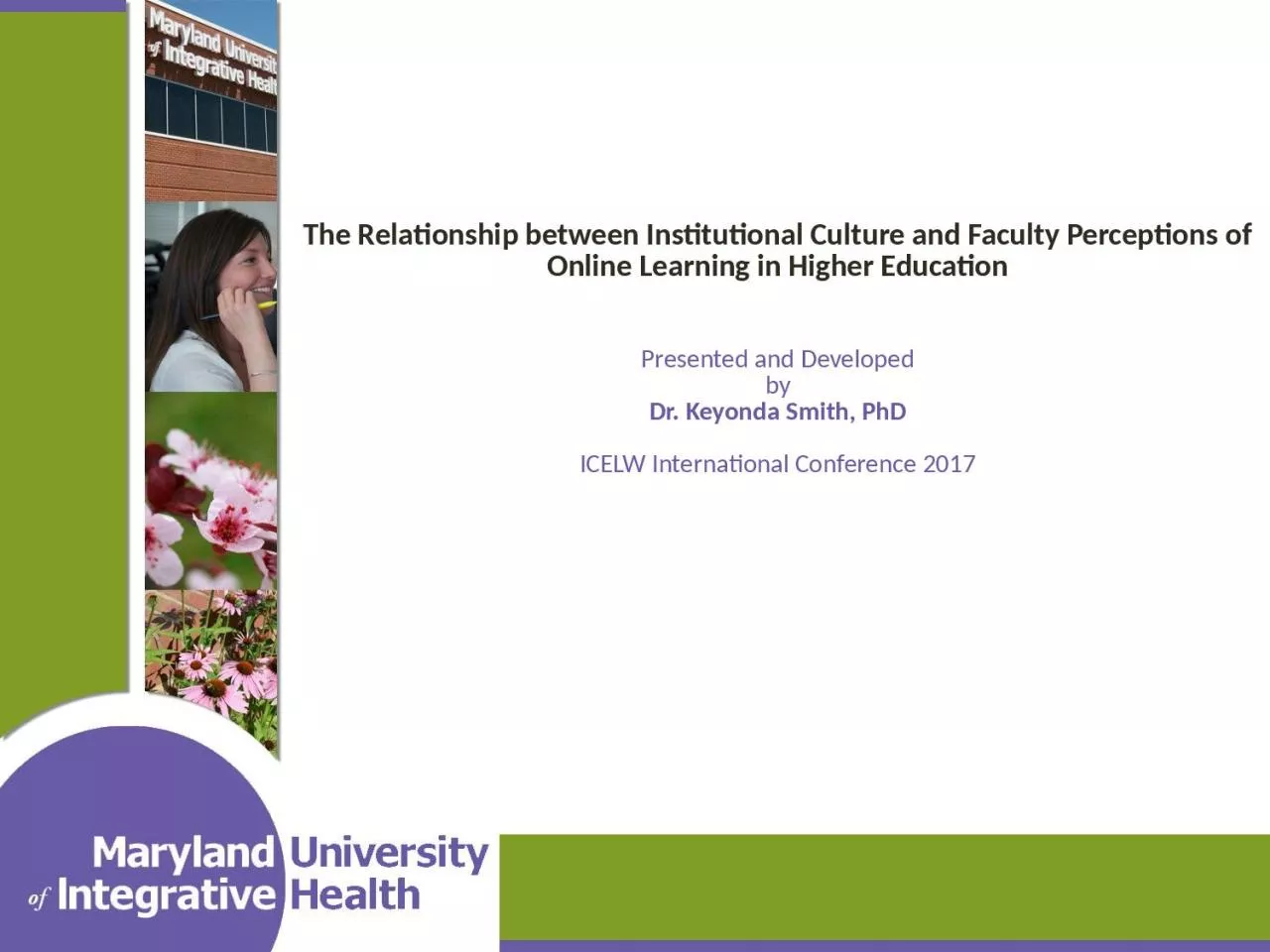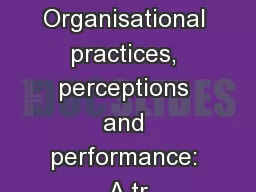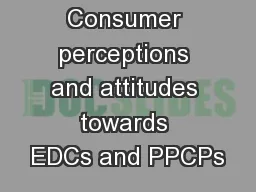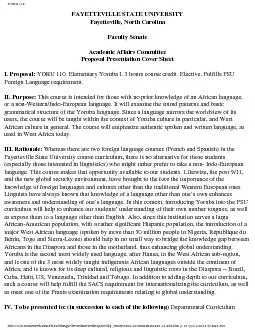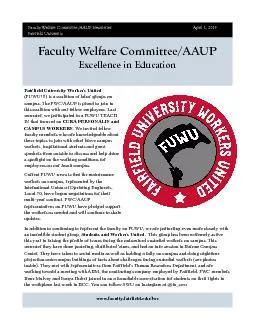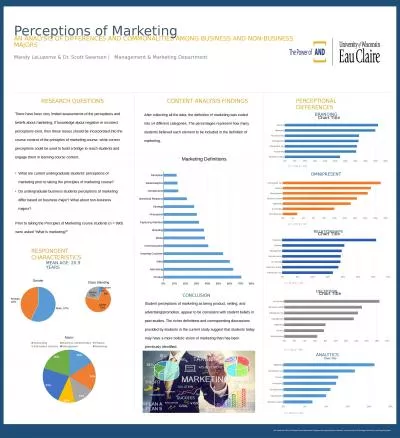PPT-The Relationship between Institutional Culture and Faculty Perceptions of Online Learning
Author : carny | Published Date : 2024-01-29
Higher Education Presented and Developed by Dr Keyonda Smith PhD ICELW International Conference 2017 Agenda Complete validated survey to determine attendees institutional
Presentation Embed Code
Download Presentation
Download Presentation The PPT/PDF document "The Relationship between Institutional C..." is the property of its rightful owner. Permission is granted to download and print the materials on this website for personal, non-commercial use only, and to display it on your personal computer provided you do not modify the materials and that you retain all copyright notices contained in the materials. By downloading content from our website, you accept the terms of this agreement.
The Relationship between Institutional Culture and Faculty Perceptions of Online Learning: Transcript
Download Rules Of Document
"The Relationship between Institutional Culture and Faculty Perceptions of Online Learning"The content belongs to its owner. You may download and print it for personal use, without modification, and keep all copyright notices. By downloading, you agree to these terms.
Related Documents

